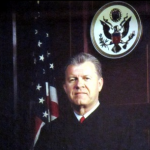 J&J hit with $498 million verdict in Pinnacle hip implant case
J&J hit with $498 million verdict in Pinnacle hip implant case
by Sindu Sindhar
Law360, New York (March 17, 2016, 12:57 PM ET) --
Johnson & Johnson was hit with an eye-popping $497.6 million verdict Thursday in the second bellwether trial in the multidistrict litigation over allegedly defective Pinnacle hip prosthetics manufactured by its
DePuy Orthopaedics Inc. unit, a major win for the plaintiffs in the litigation who had this time put forth the consolidated claims of five patients alleging problems from the devices.
After a two-month trial and days of deliberations, a Dallas jury found in favor of all five plaintiffs in the trial, delivering a verdict that included $360 million in punitive damages, lead plaintiffs' attorney Mark Lanier of the
Lanier Law Firm confirmed to Law360 Thursday.
The punitive damages are expected to be reduced to $10 million based on the statutory cap in Texas, according to John Beisner of
Skadden Arps Slate Meagher & Flom LLP, an attorney for J&J. The plaintiffs had tried to argue that the commercial bribery exception to the Texas statutory punitive damages cap would apply, claiming that one of the surgeons who had treated some of the trial plaintiffs was a "highly paid" consultant for DePuy and J&J and that those payments swayed his decisions to use the devices. The jury on Thursday rejected the commercial bribery allegations.
The jury found for the plaintiffs on their failure-to-warn and design defect claims, holding both J&J and DePuy liable, Lanier said. About $240 million of the punitive damages were assessed directly against J&J while DePuy is on the hook for the other $120 million. The $140 million in compensatory damages will be divided among the plaintiffs based on the extent of their individual injuries, Lanier said. Juries are generally just asked to award damages without factoring in the cap, which the judge usually applies later, after sometimes asking the parties to brief him on the issue.
"The jury was very careful and deliberate in the way they went about working through the evidence, and it took a week to come to the conclusion," Lanier told Law360. "I'm not surprised by the outcome."
The defendants will appeal the verdict, according to DePuy spokeswoman Mindy Tinsley. The products at issue included the Pinnacle Acetabular Cup System, a metal hip implant product with a cobalt-chromium liner that the company brands the "Ultamet" liner.
“We have no greater responsibility than to the patients who use our products, and our goal is to create medical innovations that help people live more active and comfortable lives,” Tinsley said. “DePuy acted appropriately and responsibly in the design and testing of ULTAMET Metal-on-Metal, and the product is backed by a strong record of safety and effectiveness in reducing pain and restoring mobility for patients suffering from chronic hip pain.”
The trial had involved the consolidated claims of plaintiffs Margaret Aoki, Jay Christopher, Donald Greer, Richard Klusmann and Robert Peterson, who all underwent hip arthroplasty, where a hip joint is replaced with a prosthetic. In their case, the prosthetics were DePuy Pinnacle metal-on-metal devices, which they alleged cause serious health problems including inflammation of surrounding tissues, bone erosion and metallosis, a toxic condition allegedly caused when the device’s components grind against each other and shed metal debris into the bloodstream.
Beisner indicated that he believed J&J would prevail on its arguments at appeal to the Fifth Circuit.
"We expect this to be a pyrrhic victory for plaintiffs’ counsel as the grounds for appeal are strong and the punitive damages will be reduced to around $10 million subject to the Texas statutory cap," he said Thursday.
U.S. District Judge Ed Kinkeade, who is presiding over the trial and the MDL, had ruled on Jan. 8 that the five cases had enough issues in common that they would be consolidated for trial. In particular, all five plaintiffs here underwent similar implantation surgeries, their doctors received similar warnings, and the patients all alleged similar injuries, according to his ruling.
Aoki, who had filed her suit in March 2013, was implanted with a DePuy Pinnacle metal-on-metal device in 2010. She contended that after DePuy's other hip implant product, the DePuy ASR Hip System, was recalled in 2010, J&J doubled down on marketing the metal-on-metal device as a replacement.
She claimed that the ASR recall spurred J&J into "damage control" mode, where it assured surgeons that the metal-on-metal device was safe but knew it posed the risk of complications including metallosis. She claimed in particular that more than 1,300 adverse event complaints had been made to the
U.S. Food and Drug Administration about the devices — among the roughly 150,000 such devices sold — and that J&J knew that patients implanted with those devices wound up with unsafe levels of cobalt and chromium in their bloodstream.
The first bellwether trial in the MDL ended in a significant verdict for J&J, in which a federal jury in October 2014 unanimously cleared DePuy Orthopedics of similar accusations.
The jury had found in favor of Johnson & Johnson on all counts, rejecting plaintiff Kathy Herlihy-Paoli's claims of negligence, defective design, failure to warn and violations of the Montana Consumer Protection Act after an eight-week trial in Dallas. The product at issue in the trial was the Ultamet metal-on-metal articulation.
The MDL was consolidated in May 2011, when the U.S. Judicial Panel on Multidistrict Litigation centralized three actions and identified 54 potential tag-along actions. There are now more than 8,000 cases in the MDL, all involving Pinnacle devices that contain sockets with metal, ceramic or polyethylene lining, according to court documents.
The plaintiffs are represented by W. Mark Lanier of The Lanier Law Firm, Larry Boyd, Wayne Fisher and Justin Presnal of Fisher Boyd Johnson & Huguenard LLP, Richard J. Arsenault of
Neblett Beard & Arsenault and Jayne Conroy of
Simmons Hanly Conroy.
Johnson & Johnson and DePuy are represented by Michael V. Powell and Seth M. Roberts of
Locke Lord LLP and John H. Beisner, Stephen J. Harburg, Jessica Davidson Miller and Geoffrey M. Wyatt of Skadden Arps Slate Meagher & Flom LLP.
The five cases consolidated for trial are Aoki v. Johnson & Johnson Services et al., case number
3:13-cv-01071; Christopher et al v. Johnson & Johnson Services Inc. et al., case number
3:14-cv-01994; Greer v. DePuy Orthopaedics Inc. et al., case number 3:12-cv-1672; Klusmann et al v. DePuy Orthopaedics Inc. et al., case number
3:11-cv-02800; and Peterson et al v. Johnson & Johnson Services Inc. et al, case number
3:11-cv-01941, all in the U.S. District Court for the Northern District of Texas.
The MDL is In re: DePuy Orthopaedics Inc. Pinnacle Hip Implant Products Liability Litigation, case number
3:11-md-02244, in the U.S. District Court for the Northern District of Texas.






